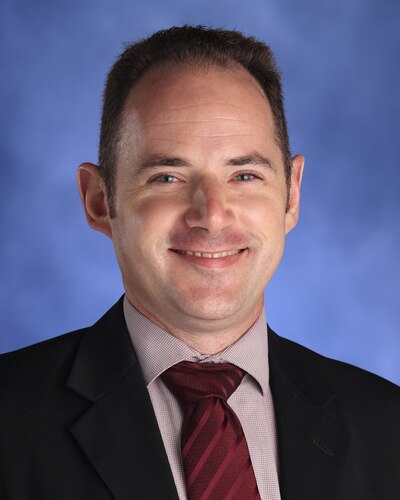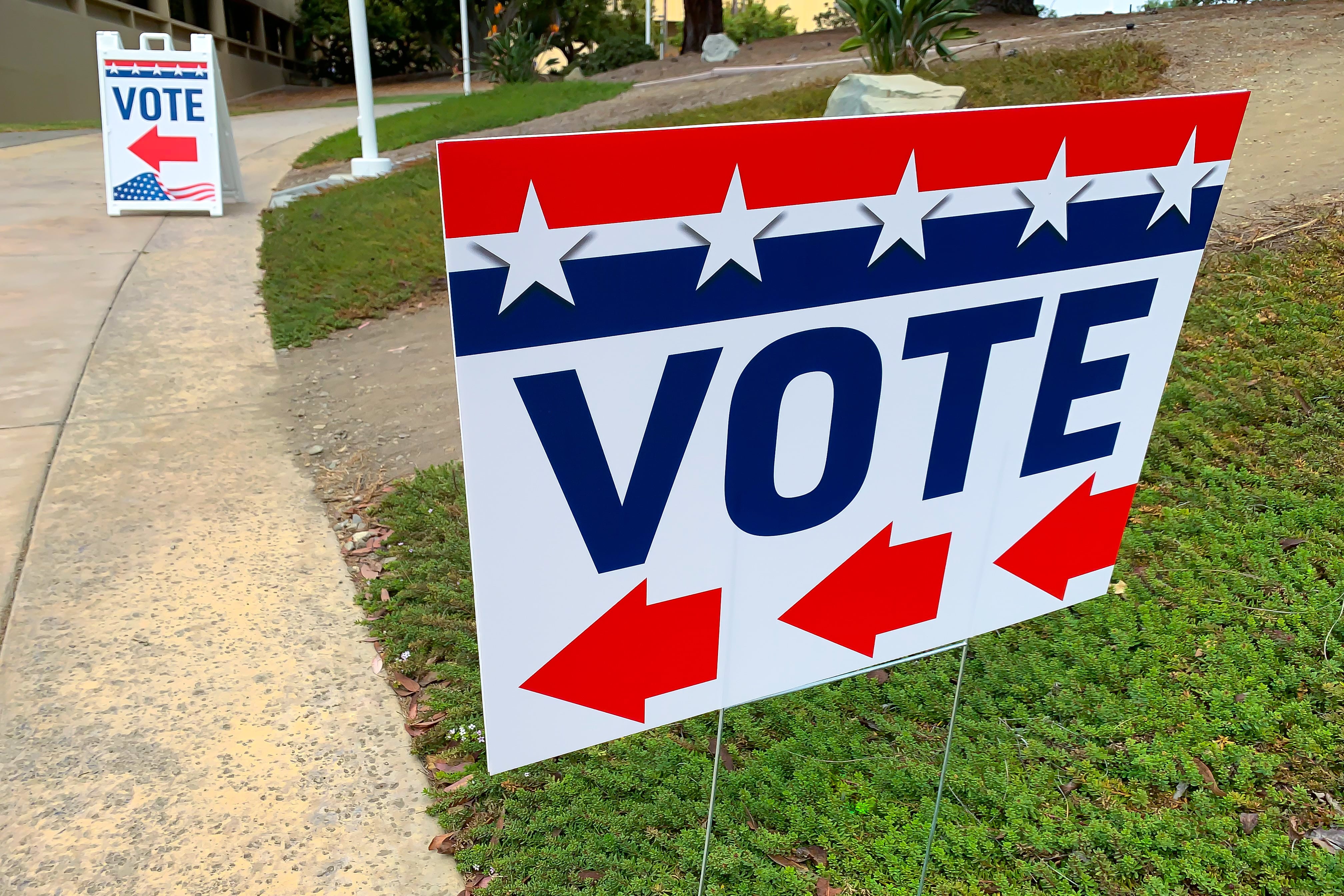When Lem Wheeles was 17 years old, he met then President Bill Clinton on the White House steps during a school trip to Washington, D.C. As he shook Clinton’s hand, “It just struck me, like, this is just another dude,” he said. “This is just another human being on the other side of that handshake.”
As a government and history teacher at A.J. Dimond High School in Anchorage, Alaska, Wheeles tries to carry that lesson forward. He wants his students to understand that government is made up of people.
“I think it’s easy for students, and it’s easy for adults as well, to just think of the government as this abstract thing out there that does stuff to them, as opposed to something that they can be a part of,” he said.
Wheeles regularly has elected officials, ambassadors, and others visit his classroom, and he hopes that his students might go on to occupy some of those positions. “I am confident that someday I’ll have a former student in an elected office,” he said. “We want people to step up and be engaged.”
Wheeles is the 2024 high school teacher recipient of the American Civic Education Teacher Award. In addition to teaching AP U.S. History and AP U.S. Government, Wheeles teaches the government class that serves as his district’s graduation requirement, and he is a student government advisor.

Wheeles teaches at the same high school he graduated from. His parents also graduated from Dimond, and so did his older daughter. His younger daughter is a current student. Dimond, Wheeles said, can feel like the community hub of a small town, despite being one of eight neighborhood high schools in the state’s largest city (with a population of about 280,000). The school serves a diverse community with sizable Alaska Native and Asian American populations, and it houses a long-running Japanese immersion program.
Wheeles started out thinking he would pursue engineering, but a dynamic high school history teacher changed his trajectory. He became fascinated with the intricacies of history and government and wanted to help young people develop into leaders ready to participate in society.
Wheeles spoke with Chalkbeat about the coin toss that helps students understand the importance of voting, why he loves to teach about the Electoral College, and the reason he doesn’t make too many changes during a presidential election year.
This interview has been edited for length and clarity.
What drew you to civics?
I remember studying the Constitution in 10th grade and just being fascinated to really understand how our government is organized. And I’m fascinated by the fact that the framers of the Constitution came together under less-than-ideal circumstances when they met in Philadelphia. They’re meeting behind closed doors to avoid a lot of public pressure, but that means they’re meeting in a room for four months in the summer in Philadelphia with no air conditioning and no ventilation really. They’re in these terrible conditions and dealing with a real political crisis. And not only do they manage to come up with anything at all, but the Constitution that they wrote is still in effect today, almost 240 years later.
Young people don’t vote at high rates, and some surveys find young people don’t think voting is as important as other forms of activism. Do you see that in your students and how do you talk to them about the importance of voting?
I don’t encounter it that much, but I really do push them to consider why voting is important and I like to point to some elections that are good examples. We talk about the 2000 presidential election and Florida and how 537 votes out of 6 million votes decided the state of Florida. But even more so, I like to tell them about a State House election here in Alaska in 2006 where it ended up a tie.
I walk them through the whole process of the ceremonial coin toss that decided who was going to be the state representative. And they went to great lengths to have a special coin struck out of gold, because the gold rush in Alaska is so important, and they flipped it onto a seal or an otter pelt on the floor. It was very Alaskana from start to finish. I really hope to show my students how much their vote counts.
To that end, the Electoral College is always a popular topic. Going back to the 2000 election, people talk about Florida and how close it was. I show them the math and point out that just as much as Florida decided the presidential election, Alaska decided the presidential election. If the three votes that George W. Bush won had gone to Al Gore, the numbers flip [and Gore would have been president]. That really piques their fascination and helps them to engage more.
Do you do any things differently during a presidential election year? Are there certain lessons or activities you bring in?
I don’t make a huge amount of change, largely because I don’t want to shortchange the other seven semesters in a four year cycle. But I try to build in time to my lesson plans to talk about current events. I have at times watched portions of debates in class and or assigned that as homework.
I don’t want to spend our time debating the candidates or the issues as much as helping them understand the system and their place in it. When we talk about political beliefs and ideology, I always start off by telling them, “I don’t care what you believe.” And I say it really callously at first, and then follow it up with, what I care about is that you start thinking things through, that you can make up your own mind.
I really try to leave my own beliefs out of any of our conversations. I think that’s the ethical thing to do, and I don’t think that’s the place of the public schools or educators. But I do think it’s my place to open their eyes to the issues that are out there and the role that they have in making our democracy work.
How do you handle political disagreements among your students?
I always try to frame it as, what’s important here is that we have a respectful dialogue and civic discourse, that we hear each other out, we consider each other’s ideas, and at the end of the day, you get to make up your own mind about where you stand. I try to keep us from diving into meaningless, circular, back-and-forth debates.
But I also let the students drive those conversations. I just really caution them to make it about the issue, not about the person you’re talking with.
In online forums or on social media, I see teachers who feel nervous about talking about the election, maybe because of the political environment in their community. Do you have advice for them?
The important thing is to stay grounded within the curricular framework. If you’re a social studies teacher, if you’re a government or civics teacher, to say, “Oh, well, you can’t talk about the election. You can’t talk about politics,” really kind of prevents you from doing your job.
I think the more important thing, though, is to really focus on the process, the way the political system operates. If you want to dive into issues, have the students choose the issues. Let the students do the research and present the different sides.
Maybe the safest way is to take a presidential debate and take the issues that are discussed there because then it’s not you saying, oh, I think we should talk about these issues.
There’s been some debate in civics education about whether we should be focusing on founding documents and how our government works, versus getting students involved in advocacy and activism. How do you balance those things?
I start by giving them the foundation, then moving into the nuts and bolts of: What does government look like today, with the three branches and how they interact and all that? And ultimately, at the end of the semester, we spend time on civic engagement.
I have my students research an issue that’s important to them and write a letter to an elected official of their choice. Now, whether they send that letter or not is up to them. I don’t think it’s my place to force them to do that.
I also have them research: Who would you send this to? And how would you send it? They have to figure out if it’s a state issue, who their state representative or state senator is. If it’s a federal issue, who their congressperson is. If it’s a local issue, which local official and how would you contact them. I really push them to develop those skills so that they can be an engaged citizen in that way.
I also do a project where we do some investigation into our state and local government, and I have them spend some time investigating different services and things that the government provides and how to access those. I have them go to the state of Alaska website, and I want them to wander around a little and maybe get lost and then explore something else. Because someday you’re going to be sitting at home going, gosh, I have this problem. What do I do about it? And I want you to know where to find the answer from your government.
Do you have a favorite lesson?
I really enjoy teaching the Electoral College, just because it is so confusing to so many people and always a question. We look at different ballots from different states. In Alaska, we just put the name of the presidential candidate and vice presidential candidate on there. Some states list the electors on their ballot. Some states say electors pledged to and then candidate’s name. And we talk through how some ways of doing this might be less confusing than others.
With my AP students, when we do the Electoral College, I have them analyze a past presidential election and look at the electoral results and try to figure out why the election turned out the way it did in different regions.
And that’s always pretty fascinating for them to get into the weeds of a presidential election and maybe some presidential election strategy. If you’re advising the candidate, what would you advise? What would the strategy be? Where would you put the money? Where would you put the ad buys?
Erica Meltzer is Chalkbeat’s national editor based in Colorado. Contact Erica at emeltzer@chalkbeat.org.







